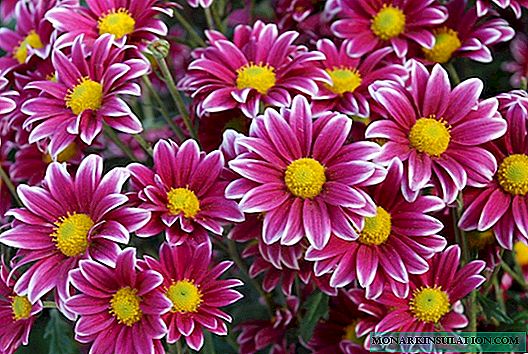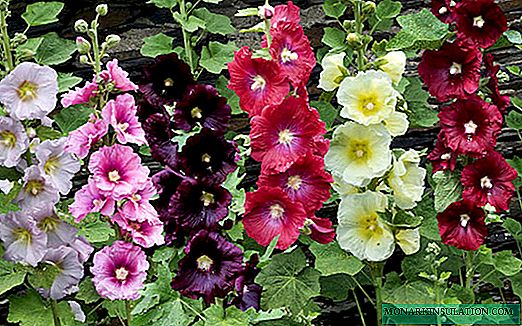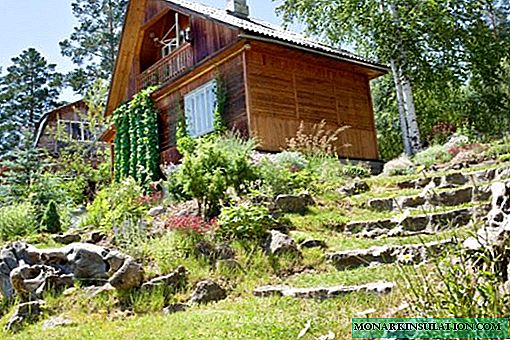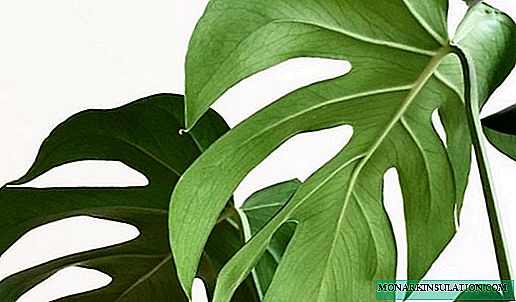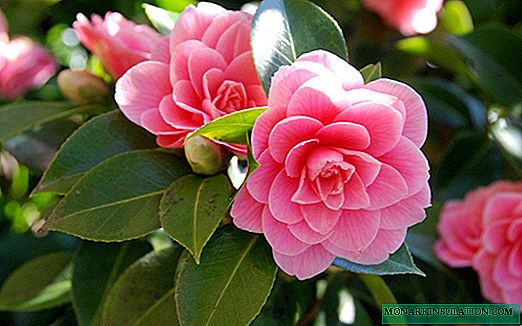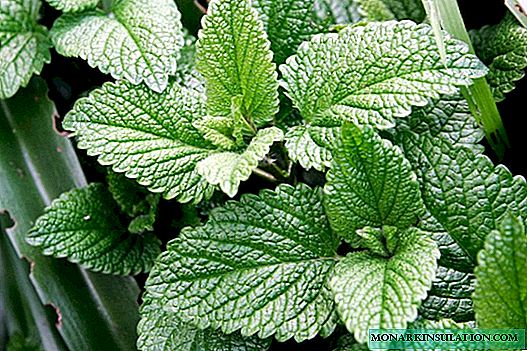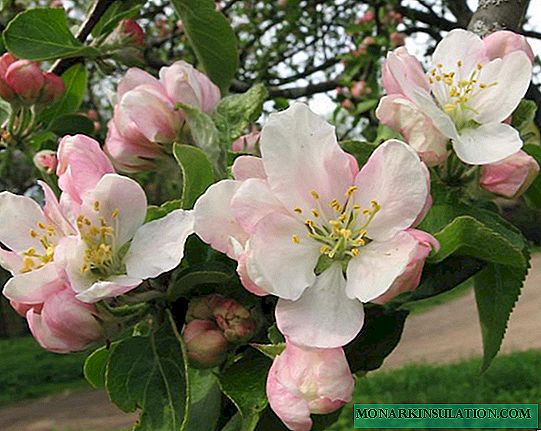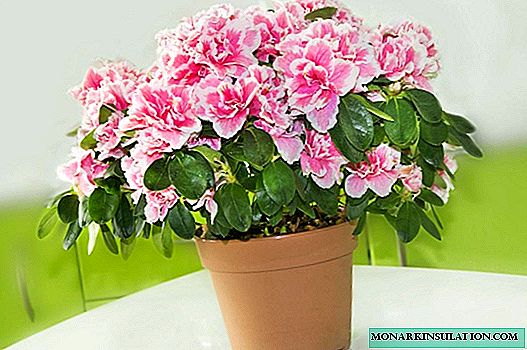The Chinese rose, it is also hibiscus, is a fairly popular plant among flower growers. As the name implies, the birthplace of culture is China. Despite the fact that caring for a flower is quite simple, it can become sick from time to time, its leaves turn yellow, a bloom appears on them, or they begin to fall off. To learn how to cope with these problems, you need to get more information about hibiscus diseases and the factors that cause them.
Causes of disease
If you systematically violate the rules for keeping the flower, problems with it can not be avoided. The main causes of the disease of an ornamental plant can be:
- keeping a pot of Chinese rose in a room with too dry or too humid air;
- neglect of spraying the crown in hot weather;
- planting a plant in open ground on a site with direct sunlight or blown by the winds;
- the presence of pests;
- long-term cultivation of hibiscus without transplant;
- placing the plant in an excessively shaded place;
- watering with the content of harmful impurities;
- lack of nutrition, etc.

Hibiscus is a very beautiful flower, the care of which is not difficult
Interesting. The Chinese rose does not like it when it is too often turned to the sun in different directions.
Hibiscus diseases, their treatment
White plaque on the leaves
White coating on hibiscus foliage is the main symptom of such an unpleasant disease as powdery mildew. It spreads very quickly, after a short time, almost every leaf of a Chinese rose appears in white spots. The spots gradually increase in size, become brown and acquire a membranous structure. Leaves begin to curl, fade and fall off. If no action is taken, the indoor flower will die very quickly.
Important! Powdery mildew spreads especially quickly if the crop is planted in a nitrogen-rich land.
If the disease was detected at the initial stage, the flower is quite possible to save. The first step is to remove all powdery mildew leaves. The plant must be treated with a solution of antibiotics. In their absence, it is allowed to apply some home remedies.
Most often, a soda solution is used (two tablespoons per liter of water). The composition should be thoroughly sprayed with the entire plant.
Another common option is a soap solution with the addition of copper sulfate. Having coped with the plaque on the leaves, hibiscus should be provided with the most comfortable conditions for growth in order to avoid a recurrence of the problem.
Drop unblown buds
Some gardeners complain that hibiscus is starting to shed its unbroken buds. Most often, the reason the plant does not want to bloom, and its unopened bud falls off, is due to the fact that the care of the Chinese rose is not organized properly.

If hibiscus drops buds, there is reason to start worrying
The following factors can cause a problem:
- too low or high temperature - so that the plant does not start dropping buds and can bloom normally, it should grow at +23 degrees in summer and +18 degrees in winter;
- direct exposure to sunlight - they burn the plant, and the still unbroken bud begins to dry out;
- too frequent watering, causing rotting of the root system;
- poor drainage;
- lack of nutrition - lack of nutrients in the soil is stressful for the Chinese rose;
- frequent plant movements - a response of hibiscus to stress - falling buds.
Hibiscus chlorosis
Many beginner gardeners are wondering when the hibiscus leaves turn yellow and fall off what to do. If no pest is detected, and there is no cobweb or plaque on the foliage, then most likely it is a fairly common disease. The answer to why hibiscus leaves turn yellow lies in a diagnosis such as chlorosis.

Hibiscus chlorosis is a fairly common disease
This disease is associated with a violation of the formation of chlorophyll in the foliage. At the same time, the yellow leaf has green veins.
The reasons why chlorosis can develop and the leaves turn yellow are as follows:
- soil deficiency of elements such as magnesium, zinc, sulfur, lime and iron;
- insect infection or microorganisms;
- germination defects;
- poor soil condition;
- lack of drainage;
- hereditary factor.
Not only yellowing of the leaf plate is a symptom of chlorosis. In addition, the leaves begin to decrease in size, their edges begin to curl, the shape of buds and flowers changes, drying of apical shoots is observed.
The treatment of chlorosis is possible only with the use of special preparations: Agricola, Fkerovit, Antichlorosin, Iron Chelate, etc. The compounds are applied under the root or used for spraying.
To prevent yellowing of the leaves, some preventive measures will be effective. In particular, it is important to choose a good substrate for the flower - light and permeable, pay attention to the acidity of the soil and prevent its alkalization, and periodically water the plant with acidified citric acid water. A few grains are enough per liter of water.
In most cases, if you organize the right care, questions about why the leaves of the Chinese rose turn yellow and fall, and what to do in this case, most likely, will not arise.
Hibiscus pests
Another condition why the leaves of a Chinese rose turn yellow is an attack of pests.
Hibiscus aphid
The appearance of a pest such as aphids on hibiscus is not a rare occurrence. When this parasite appears, it is usually not one branch that is affected, but the whole plant as a whole. If you do not worry about solving the problem in a timely manner, the foliage may fall, the plant itself will eventually die.

Aphids often infect hibiscus
Especially strongly insects are attracted by young and juicy shoots. It is possible to understand that the Chinese rose is infected with aphids by the deformation of leaf plates and the presence of a large number of sticky secretions.
The fight against aphids should begin with the mechanical removal of insects from the flower. This is done with soap and an ordinary cotton swab. This should not be stopped - after the physical elimination of aphids from leaves and stems, it is necessary to use chemical preparations, like Biotlin, Aktara, Anabazin, Nicotine sulfate and some others.
From the first call it is unlikely to cope with the pest. So, most likely, the processing will need to be repeated. Usually re-spraying the plant is made a couple of weeks after the first.
On the Internet you can find many popular methods for combating aphids, but all of them are not very effective when it comes to serious cultural damage.
Hibiscus shield
Scale shield can cause very significant damage to the Chinese rose. This is a small pest, the length of which is not more than 5 mm. Their color can vary from light to dark brown.

Scalp can cause great harm to the Chinese rose
Since scaleflies live mainly in colonies, they can cause very significant damage to hibiscus. When summer begins, it is strongly recommended that you periodically inspect the pot with the plant for the presence of harmful insects.
Scale guards suck out from the flower all the useful substances vital for its growth. When an insect is damaged, growths and curvatures appear on the trunk, the shoots begin to dry out, and the leaves turn yellow and fall over time.
Interesting. The males of the scutellaria have wings that allow them to travel significant distances.
You can deal with pests using both folk and chemical methods. Of the available materials, alcohol, onion infusion, decoction of tobacco leaves and garlic infusion are especially effective. As for chemistry, any insecticides should be used to combat scabies. For example, Karbofos, Fitoferm, Actellik and some others.
Black aphid
Another parasite that can cause significant damage to the Chinese rose is black aphid. This insect is very similar to ordinary aphids, but it has (as the name implies) black color. Usually this insect infects plants growing in open ground. The parasite has wings, it lives in large colonies and affects the flower quickly and unexpectedly. At the first symptoms of the appearance of black aphids, a comprehensive fight against the parasite should begin. At the same time, it is recommended to simultaneously use mechanical, agrochemical and folk methods of struggle.
Mechanical methods include applying gels and sticky tapes to hibiscus branches, watering them under strong pressure and physically crushing insects. From agrochemical preparations, you can use such insecticides as Dichlorvos, Kortlis, Komandor, etc.
Folk recipes against black aphids offer spraying of infected plants with a weak solution of Ferry or garlic infusion, pollination with clean ash, smoke bombs for fumigating a site and much more.
So that the hibiscus is not sick and does not suffer from parasites, you should pay maximum attention to the flower and respond to any changes in its normal growth, leaf formation and flowering.

